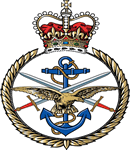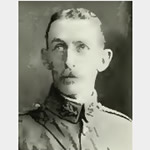Commemorated: | |||
| 1. Memorial: | Le Touret Memorial | Panels 34 and 35. | |
| 2. Book: | The (1921) Masonic Roll of Honour 1914-1918 | Pg.127 | |
| 3. Memorial: | The (1940) Scroll - WW1 Roll of Honour | 53B GQS | |
Awards & Titles: | Queen's South Africa Medal 4 Clasps | ||
Family :
Husband of Mary Murch (formerly Peirce), of Elmhurst, Fordingbridge, Hants.Service Life:
Campaigns:
- The Second Anglo-Boer War 1899-1902, South Africa.
- The First World War 1914-1918, World-wide.
| Unit / Ship / Est.: 2/Manchester Regiment |
2nd Battalion August 1914 : at the Curragh. Part of 14th Brigade in 5th Division. 17 August 1914 ; landed at Le Havre. 30 December 1915 : moved with the Brigade to 32nd Division. 6 February 1918 : transferred to 96th Brigade in same Division |
| Action : The Battle of La Bassee |
The battle of La Bassee, 10 October-2 November 1914, was part of the Race to the Sea, the series of battles that established the line of the Western Front from the Aisne to the North Sea. The BEF had been swept up in the great retreat that had ended at the first battle of the Marne.
Once the situation east of Paris had stabilised, it was decided to move the BEF north to Flanders. This would greatly simplify the problems of supplying the British army in France by bringing the army closer to the channel ports. It was also still believed that it would be possible to get around the right flank of the German armies that had marched south to the Marne, and Flanders was seen as a good area for cavalry. II Corps of the BEF arrived at Abbeville by train on 8-9 October. It was then decided to send it north east towards La Bass?e, to the left of the French lines. Sir John French was planning a general offensive along what would become the British line, aimed at recapturing Lille and perhaps even breaking through into Belgium. The battle really began on 12 October.
On that day II Corps was ordered to advance east to a line running north from Givenchy. The British advance was opposed by four German cavalry divisions from I and II cavalry corps. It would take three days to reach the line originally intended to be the target for the fighting on 12 October. During those days II Corps suffered 2,000 casualties, half of them on the first day. Givenchy was captured on 12 October, but lost on the next day. On 15 October the British learnt that the German cavalry corps were about to withdraw, but not that they were about to replaced by the infantry of VII corps. General Smith-Dorrien ordered a new offensive, this time to the south east. Its aim was to outflank the German troops attacking the French lines to the south. The attack began on 16 October, and made slow progress. Givenchy was recaptured, but the advance failed to reach Le Bass?e (the official history records that British troops were not to be this close to Le Bass?e for four years). II Corps suffered another 1,000 casualties during this phase of the battle. A key element in the failure of the offensive was the arrival of German reinforcements. XIII corps took over part of the line held by VII corps, thickening the German lines. Another Allied attack was planned for 19 October. The only success during this attack would lead to tragedy. The 2nd battalion of the Royal Irish captured Le Pilly, a village on Aubers Ridge, but the rest of the advance failed. The Royal Irish were dangerously isolated, but before the order to retreat could reach them they were surrounded by the Germans. Of nearly 900 men only 300 survived to surrender to the Germans.
On 20 October the Germans went onto the attack. A major offensive was launched all along the German line from Arras to the sea. Fortunately, that day II corps had halted their offensive and been ordered to hold their line. German attacks on 20 and 21 October were repulsed, but Smith-Dorrien decided to retreat to a stronger defensive line that had been prepared behind the front line. Although work had begun on preparing this new line, it was still very basic compared to the trench lines that would follow. Very little barbed wire was available, all of it taken from local fields, while there had not been the time or labour to dig proper trenches. What the line did have in its favour was that its line had been carefully selected by the engineers. The new line began close to the right wing of II corps, but as it ran north the gap increased, until at its northern end it was two miles behind the most advanced portions of the line. The retreat was carried out over the night of 22/23 October, and caught the Germans by surprise. 23 October was thus a quiet day. The same period also saw the arrival of the Lahore Division of the Indian corps to the rear of the line. During the rest of the battle Indian troops would play an increasingly important role in the fighting, until on 30 October the Indian Corps would relieve II corps. By then the fighting had largely died down.
The German attack was renewed on 24 October along the entire Sixth Army front. A daylight attack failed to make any headway. It was followed by an attack at dusk, which did break into the British trenches at two places, but local counterattacks restored the situation. A second night attack, on 26/27 October, caused more problems. Part of the British line was broken, and the village of Neuve Chapelle captured. This created a shallow salient in the British line. At this early period in the war the buildings of Neuve Chapelle still survived, making the village a dangerous strong point that threatened the British lines. A major counter attack was launched on 28 October, but failed to retake the village. On 29 October the village was reported to have been evacuated, but later in the day German troops used the ruins as cover for their last major attack of the battle.
After the failure of the attack on 29 October, the Germans moved much of their heavy artillery north towards Ypres, where it took part in the battle of Gheluvelt. This marked the end of the serious fighting at Le Bass?e, although small scale attacks continued for some days. On 30 October the Indian corps began to replace II corps in the line. On the morning of 31 October command of the sector was officially handed over to General Sir James Willcocks, commander of the Indian Corps. II corps had suffered 14,000 casualties during October 1914, but despite these heavy losses and the constant fighting since 12 October, the BEF could not afford to give the corps a proper rest. As they left the front line the men of II corps turned north towards Ypres.
Detail :
CAPTAIN WILLIAM GABRIEL KING PEIRCE, 3rd (attd 2 BTN), MANCHESTER REGIMENT who was killed in action on the 26th October, 1914, at Festubert, France, was the son of the late Richard King - Peirce M.R.C.S., England. William Peirce is mentioned in the history of the 1/5 Leicestershire Regiment. On the outbreak of the war he was serving with that battalion and it notes that; The orders were drawn up by Lt.-Colonel G. German, T.D., our former commanding officer, now D.S.O., and by his conscientious and indefatigable adjutant, Captain W. G. King Peirce, who was killed early in the war fighting with his old regiment, the Manchesters. He was killed with the 2/Manchesters in the general defence of the area around Neuve Chapelle, a place that was to be the location for the first major attacking battle by the BEF in March 1915. The Official History for October 1914 notes that Enemy patrols on the night of 25/26th October were very active. At dawn a determined attack was made on the 2/Manchester and 1/Bedfordshire, north of Givenchy, by Germans who had crept up close during the night. They were driven back by fire which had to be chiefly directed by sound as the troops had ...no illuminating apparatus. William Peirce became a casualty during that desperate defence by 2/Manchester. He was born on the 5th July, 1875 and was educated at Bradfleld College from 1887-94. There he was a prefect, and was in the Football XI, being captain in 1893, and in the Cricket XI, 1893-94. From Bradfield he went to Merton College, Oxford, where he was captain of the rowing eight, and took his degree in 1898. He joined the Manchester Regiment in May 1899, and took part in the South African War, being present at operations in the Orange Free State, Transvaal, Orange River Colony, and Cape Colony, including the actions at Biddulphsberg and Wittebergen. He received the Queen's medal with four clasps. In December, 1901, he reached the rank of Captain, and. leaving the Regular Army in November, 1911, he joined the 3rd Battalion of his regiment in May, 1912. He had qualified at a School of Musketry, and as an Instructor in Army Signalling. After joining the 3rd battalion he assisted for some time at the O.T.C. School, Shrewsbury. Captain King-Peirce married Mary Agnes, third daughter of Thomas B. Fisher, Esq., of Sutton, Surrey, and was living near Wimborne when he rejoined for active service. The 1921 Masonic Roll of Honour lists William PEIRCE as W G KING-PEIRCE Sources; A record of the l/5th Battalion the Leicestershire Regiment, T.F., during the War,1914-1919.- CAPTAIN J. D. HILLS, Official History Military Operations France & Belgium 1914 Vol II
Masonic :
| Type | Lodge Name and No. | Province/District : |
|---|---|---|
| Mother : | Apollo University No. 357 E.C. | Oxfordshire |
Initiated | Passed | Raised |
31st May 1898 | 29th November 1898 | 31st January 1899 |
Initiated into Apollo Lodge No. 357 whilst undergraduate at Merton College, Oxford University aged 22. He resigned 16th February, 1904.
Source :
The project globally acknowledges the following as sources of information for research across the whole database:
- The Commonwealth War Graves Commission
- The (UK) National Archives
- Ancestry.co.uk - Genealogy, Family Trees & Family History online
- ugle.org.uk - The records of the United Grand Lodge of England including the Library and Museum of Freemasonry
Additional Source:
- Founder Researchers : Paul Masters & Mike McCarthy
- Researcher : Bruce Littley

